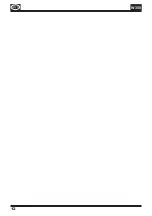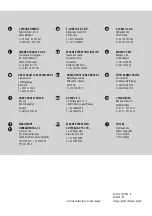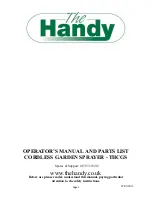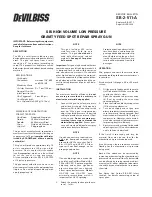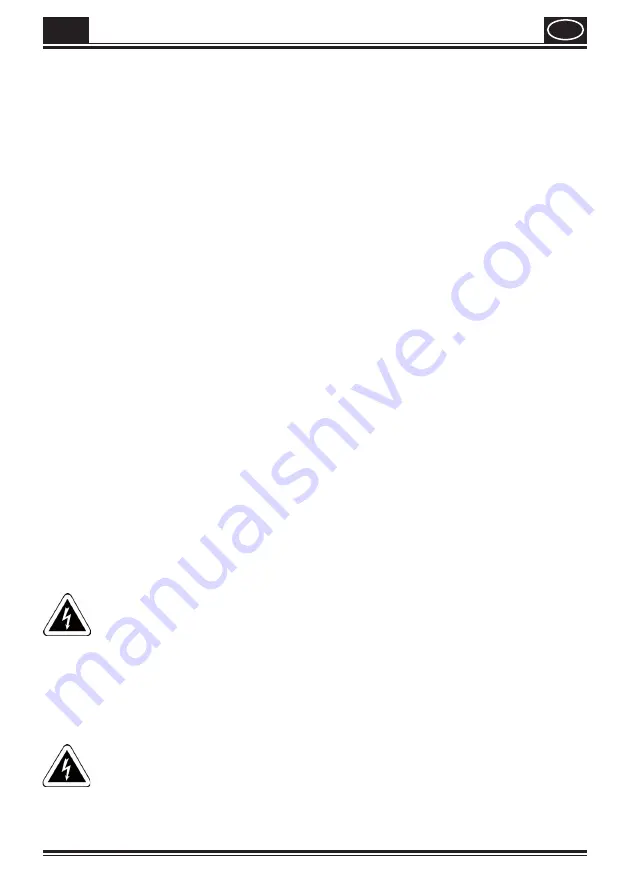
7
W 350
AUS
setting.
Important:
Begin spraying outside of the target area and avoid interruptions inside the
target area.
•
Correct (Fig. 7a)
Be sure to hold the spray gun at an even distance of approx. 5 - 15 cm
to the target object.
•
Incorrect (Fig. 7b)
Heavy spray fog build-up, uneven surface quality.
•
Move the spray gun evenly cross-wise or up-and-down, depending on the spray pattern
setting.
12. Taking Out of Operation and Cleaning
Proper cleaning is the prerequisite for problem-free operation of the paint application
device. No warranty claims are accepted in case of improper or no cleaning. When
processing 2-component varnishes, clean the device immediately.
1) Turn off the machine and remove the plug. Vent the container in case of longer breaks
and after the work has been terminated. This can be done by briefly turning open
and then closing the container or by pulling the trigger and letting the paint into the
original paint container.
2) Divide the spray gun. Press the hook (Fig. 3 "click") slightly downwards. Turn the gun
front part and gun rear part against each other and take them apart.
3) Unscrew the container. Empty any remaining coating material back into the material
tin.
4) Pull out the suction tube with container seal.
CAUTION!
Never clean seals, diaphragm and nozzle or air holes of the spray gun with
metal objects. The ventilation hose and diaphragm are only solvent-resistant
to a limited extent. Do not immerse in solvent, only wipe.
5)
The unit may only be operated with an integer diaphragm (Fig. 9 A, 15).
If any
paint has penetrated to the ventilation hose, check and clean the membrane (see the
Maintenance chapter).
WARNING! Never hold the spray gun rear part under water or immerse it
into liquids. Clean the housing only with a moistened cloth.
6) Unscrew the union nut (Fig. 9, 1) and remove the air cap (2) and nozzle (3). Clean the air cap,
nozzle seal (4) and nozzle with a brush and solvent or water. Clean the ventilating bore
(Fig. 9, C).
Assembly
Attention! Never operate the device if the nozzle seal is either damaged or
missing. If the nozzle seal is either missing or damaged liquids can enter
the device and increase the risk of an electric shock.
1) Push the nozzle seal (fig. 9 B, 4) over the needle (18); the groove (slot) should point
towards you.
Summary of Contents for W 350
Page 1: ...wagner group com WOOD METAL SPRAYER W 350 OPERATING INSTRUCTIONS AUS ...
Page 2: ...W 350 a A B b 10 9 7 8 6 4 5 3 1 2 13 11 12 ...
Page 3: ...W 350 click c d A B C 2 1 ...
Page 4: ...W 350 g A B ...
Page 5: ...W 350 5 7 1 12 4 3 2 11 C 10 9 A 9 B 6 9B 9 14 13 15 9A 8 16 18 4 3 ...
Page 18: ...12 W 350 AUS ...
Page 19: ...13 W 350 AUS ...


















